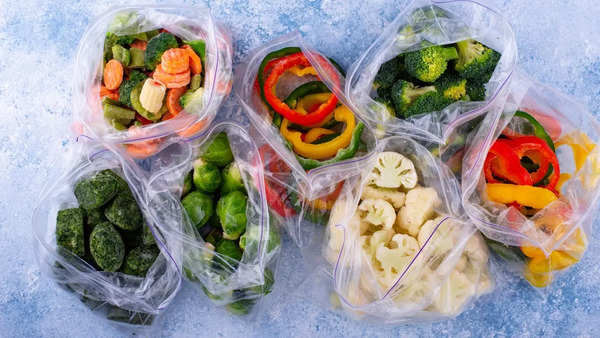Loss of nutrients
One of the primary concerns with frozen foods is the potential loss of nutrients. While freezing may preserve vitamins and minerals to some extent, the process of blanching (a brief heat treatment before freezing) can cause significant nutrient loss, particularly in water-soluble vitamins such as vitamins C and B. Over time, even frozen foods stored at the correct temperatures can experience nutrient degradation, making them less nutritious than their fresh counterparts.
Also read: Is frozen food not as unhealthy as it is believed to be?
High Sodium Content
Frozen meals and snacks often contain high amounts of sodium, which is used as a preservative and flavor enhancer. Consuming too much sodium can lead to health problems such as high blood pressure, heart disease, and stroke. The American Heart Association recommends limiting sodium intake to 2,300 milligrams per day, but many frozen foods contain close to or more than this amount in a single serving. Therefore, regular consumption of high-sodium frozen foods can pose serious health risks.
Artificial additives and preservatives
To enhance taste, color and shelf life, many frozen foods contain artificial additives and preservatives. These chemicals, such as monosodium glutamate (MSG), artificial colors and synthetic flavorings, can have adverse health effects. For example, some people may have allergies, headaches or other symptoms due to these additives. Additionally, long-term consumption of foods with artificial additives has been linked to various health concerns, including hyperactivity in children and an increased risk of cancer.
Also read: 8 Healthy Frozen Foods You Must Try
Trans Fats and Unhealthy Fats
Frozen convenience foods such as pizza, pies and pastries often contain trans fats and unhealthy saturated fats. Trans fats, which are created during the hydrogenation process to increase shelf life, are particularly harmful because they raise levels of bad cholesterol (LDL) and lower levels of good cholesterol (HDL). This increases the risk of heart disease, stroke and type 2 diabetes. Although some countries have regulations limiting trans fats, many frozen foods still contain significant amounts of unhealthy fats.

Risk of foodborne illnesses
Although freezing stops the growth of most bacteria, it does not kill all pathogens. Improperly handling, thawing, or re-freezing frozen foods can lead to the growth of harmful bacteria such as salmonella and listeria. These bacteria can cause foodborne illnesses, causing symptoms such as nausea, vomiting, diarrhea, and, in severe cases, hospitalization. Following proper storage and cooking instructions is essential to reduce the risk of foodborne illnesses.
Also read: Why should you be careful when choosing frozen foods?
increase in calorie intake
Frozen foods, especially prepackaged meals and snacks, can be calorie-dense due to added fats, sugars and starches. Regular consumption of these high-calorie foods can contribute to weight gain and obesity, especially when combined with a sedentary lifestyle. Obesity is a significant risk factor for many health conditions, including heart disease, type 2 diabetes and some cancers. To maintain a healthy weight, it is important to be mindful of portion sizes and choose frozen foods with low calorie content.
Negative environmental impact
The production, packaging, and transportation of frozen foods can have a significant impact on the environment. The energy required to freeze and store these foods contributes to greenhouse gas emissions, while packaging often includes single-use plastics that end up in landfills. Additionally, transporting frozen foods long distances increases the carbon footprint. Choosing locally sourced fresh produce and reducing the use of frozen foods can help reduce this environmental impact.
While frozen foods offer undeniable convenience and can be part of a balanced diet, it is important to be aware of their potential side effects. Nutrient loss, high sodium content, artificial additives, unhealthy fats, risk of foodborne illnesses, increased calorie intake and environmental impact are significant concerns associated with regular consumption of frozen foods. By making informed choices and selecting fresh, whole foods whenever possible, you can enjoy a healthy diet and minimize the risks associated with frozen foods.
(Image courtesy: Canva)

















